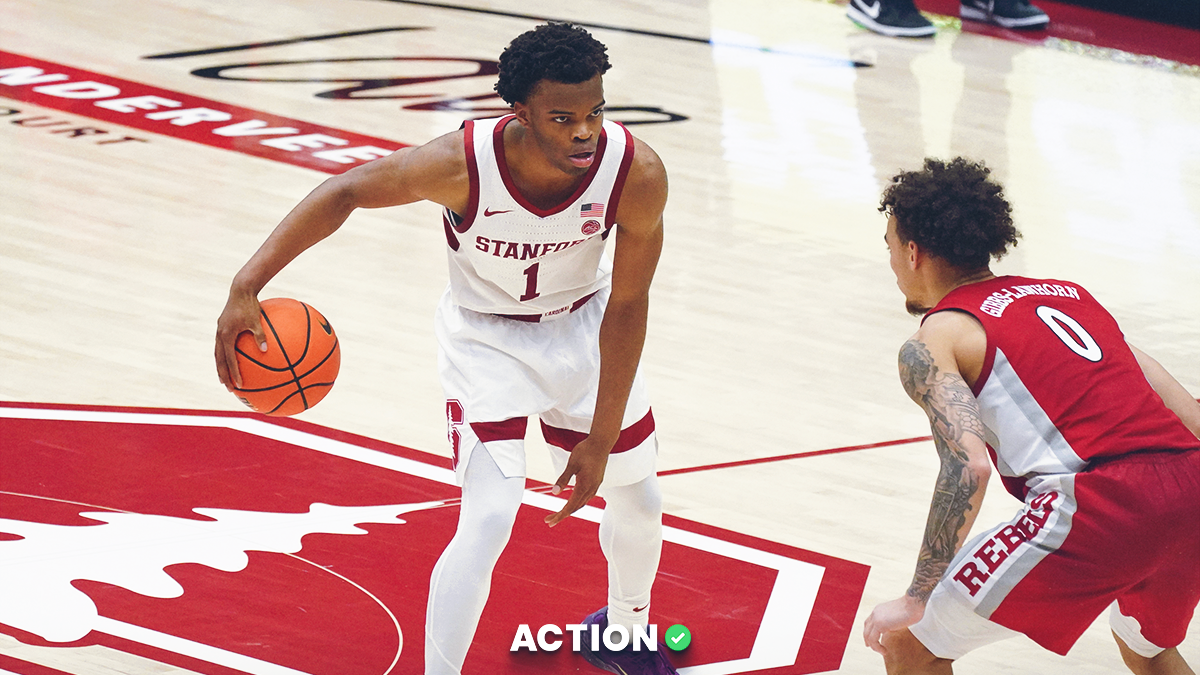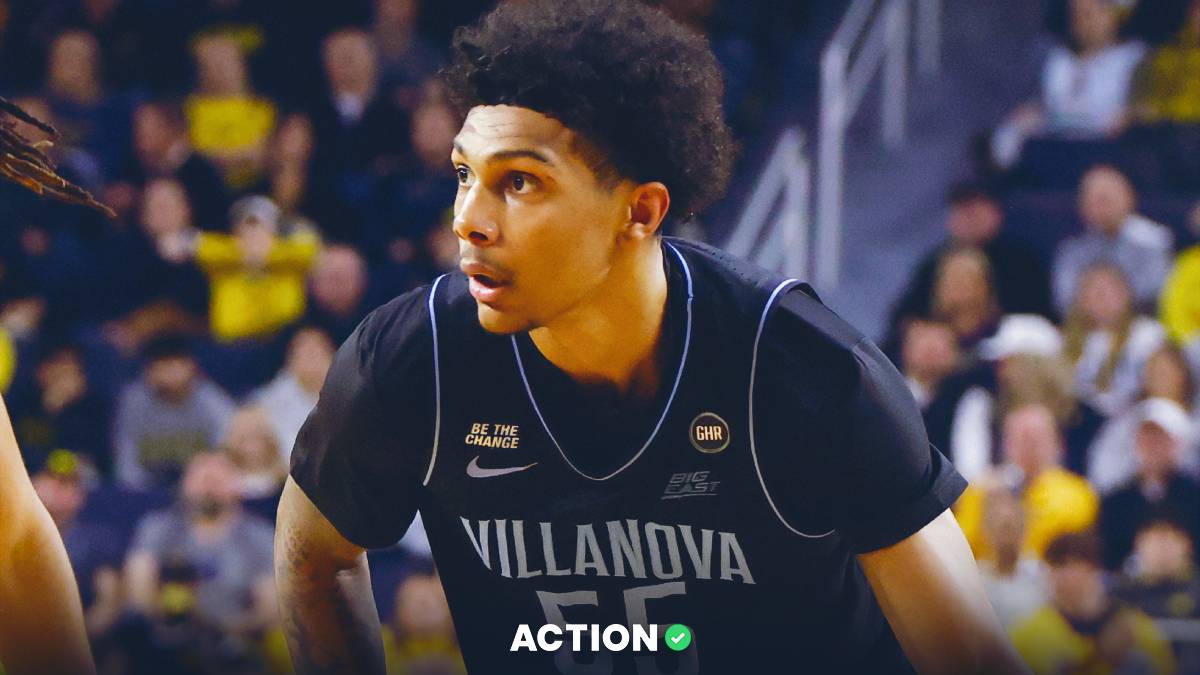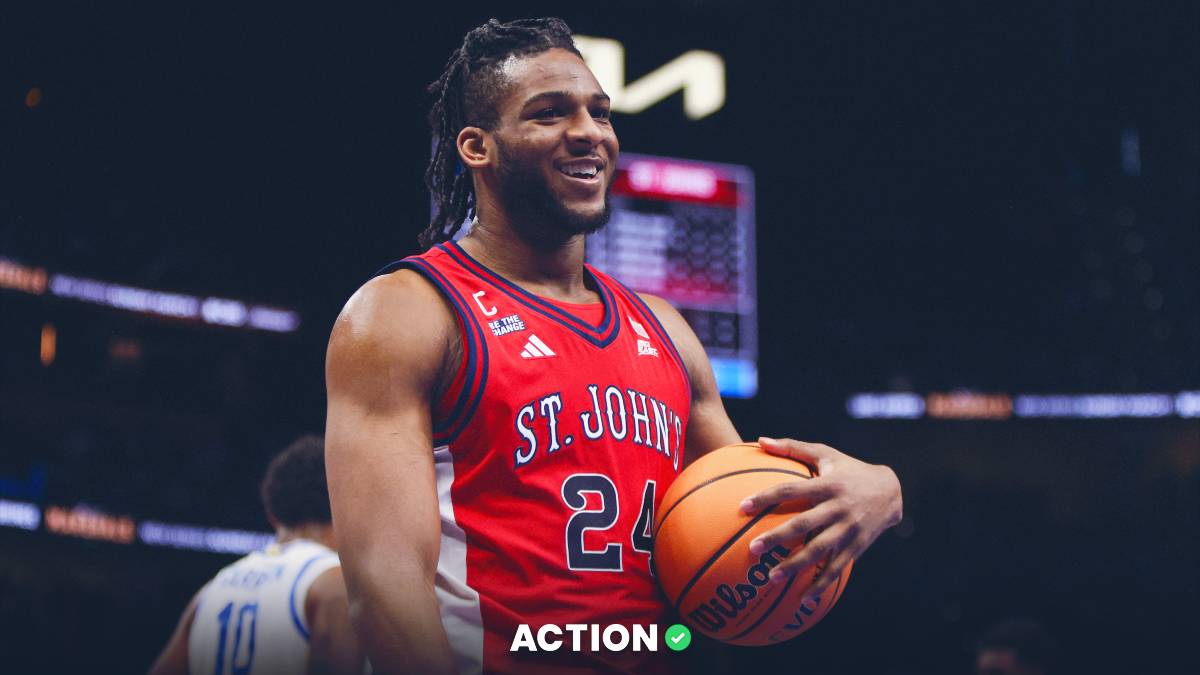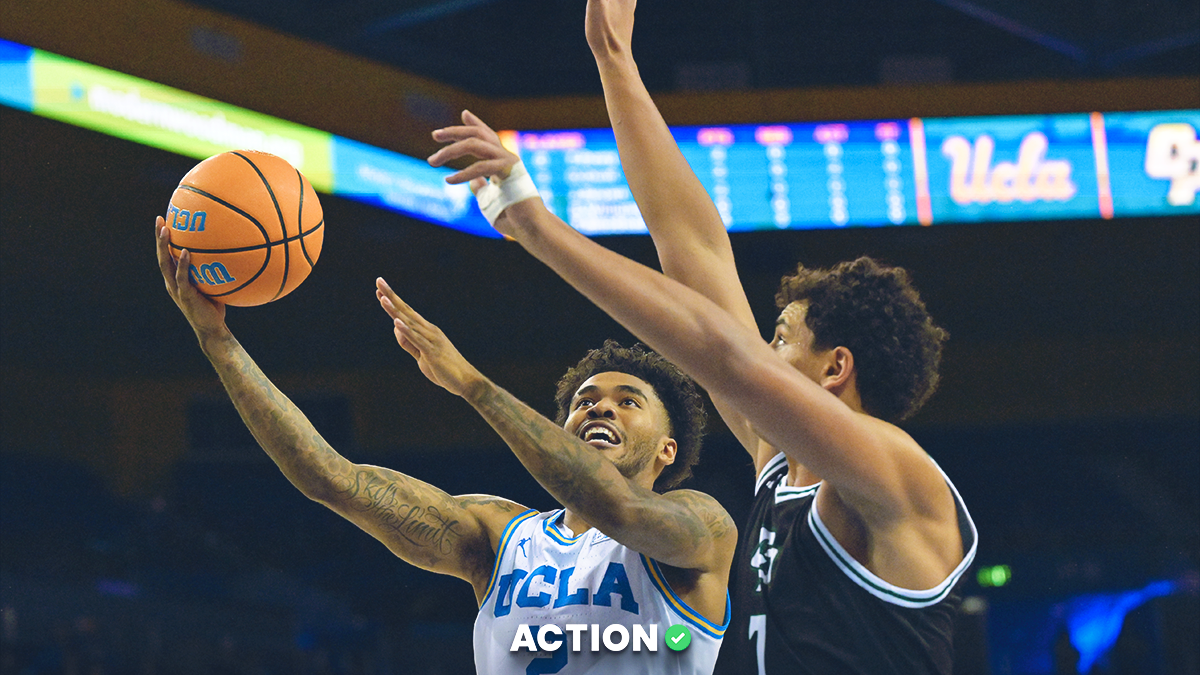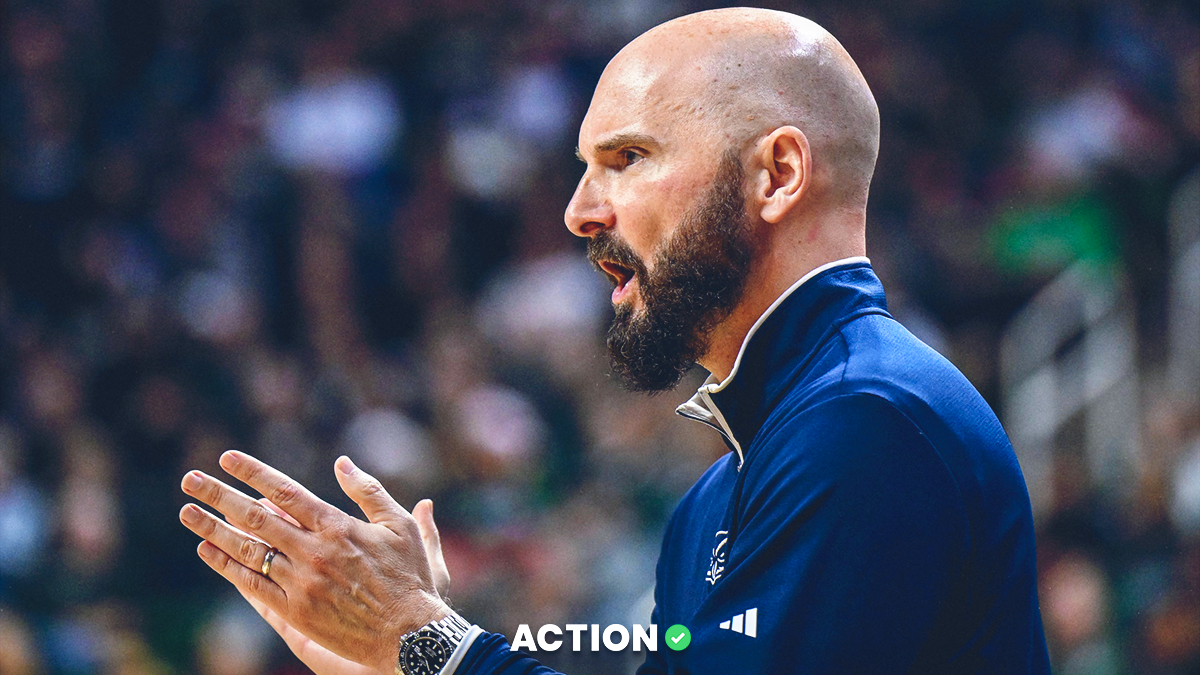- The league is pretty top heavy, but it's a deep top half, as at least five or even six teams can legitimately win the Big Sky. The lower tier, meanwhile, should be slightly improved.
- Defending champion North Dakota will be playing in their final Big Sky season, as they'll head to the Summit League after this year.
- The conference tournament will also be on the move after this year, from Reno to Boise.
- Two new coaches enter the league for the 2017-18. Barret Peery replaces Tyler Geving at Portland State, while Shantay Legans was rapidly promoted at Eastern Washington when Jim Hayford went to Seattle.
- Look for the league's most consistent and predictable team to switch gears this year. At Weber State, Randy Rahe has held on to a formulaic and traditional model of basketball – two big men tethered to the paint offensively and no double teaming in the post defensively. With the addition of Brekkott Chapman, arguably the league's most talented player, Rahe will probably have to finally embrace the stretch 4 concept.
PREDICTED ORDER OF FINISH:
1. Idaho– No team in the Big Sky, and very few in the entire country, return as much experience and scoring as the Vandals do this year. Don Verlin is basically returning six starters if Perrion Callandret's knee holds up, and it's not just quantity returning, it's quality. Victor Sanders headlines the backcourt as a certain player of the year candidate. He posted a 115.7 ORtg in Big Sky play while playing out of the position at the point with Callandret hurt. Sanders was seventh in assist rate in the Big Sky, drew fouls at the second-highest rate in the league and shot 46 percent from 3-point range. If Callandret, himself an All-Big Sky point guard, is healthy enough to move Sanders back off the ball, watch out for the Vandals. Callandret may have lost a bit of his explosiveness with injuries, but he and Sanders are both long, athletic guards and form arguably the league's best backcourt, and one of the best in all of mid-majordom. Sophomore Trevon Allen returns as backcourt depth, and he showed a scorer's mentality in the wild Weber State game that Sanders was forced to miss last year. Allen struggled picking up Verlin's defense in his freshman year but should show improvement in his second go round. Chad Sherwood returns as a fifth-year senior (one of three on the veteran Vandal roster) and should continue to pitch in his spot shooting and solid defense. Jordan Scott heads up the wing corps as Verlin's most versatile defender in his pack line/3-2 zone hybrid defense. A big jump from Brayon Blake, arguably the most talented Vandal, would be a huge lift for the offense. Blake, a 6-foot-7 former JUCO All-American, can score from all three levels, but he's been wildly inconsistent. The frontcourt is solid, if also inconsistent. Arkady Mkrtychyan has battled injuries the past two years, but he finished last season playing the best basketball of his career. Nate Sherwood returns to round out the frontcourt, and he's a little more versatile offensively and can be used in pick and pop sets. Verlin has traditionally relied on a deep rotation (some of that has been injury induced, however), so even with a veteran team, there are minutes available for the freshman class, especially in the frontcourt. Cassius Smits-Francisco (Rik Smits' nephew) is a legit 7-footer, while Geno West is a high-scoring combo guard who should see minutes as well. 6-foot-6 Garrett Kingman is an option on the wing, where there isn't as much depth. With one of the most experienced teams in the country, Idaho has to have a sense of urgency this year. If Callandret can stay on the floor, the Vandals have to be considered the favorite to win the Big Sky.
2. Weber State– Randy Rahe is the dean of Big Sky coaches, and the Wildcats have had nearly unprecedented success in the league, but per offseason talk, Rahe is going to switch up his traditional scheme. Under Rahe, WSU has always been a two post team. That's mainly for defensive purposes, as Rahe doesn't like to have double the post or over hedge on penetration into the lane, which allows his teams to really take away the 3-point line, generally better than any team in the country. In the last five season, WSU's defense has allowed the lowest 3-point attempt rate in the country three times (14th and seventh lowest the other two seasons). WSU is generally the best, or among the best, defensive team in the league annually under Rahe, but last year the Wildcats plummeted to 10th in defensive efficiency in league play, and while a lot of that can be traced back to playing their first post-Joel Bolomboy season (from 0.94 points per possession in league play two years ago to 1.08 last year without him), a certain amount of blame has to be placed on scheme. Simply put, teams aren't trying to score around the rim as much in the small ball era, and putting two bigs on the floor at all times (even if they have the versatility of a Kyndahl Hill) may not be the optimal approach. That should change this year as Rahe has Brekkott Chapman eligible, a former four-star transfer out of Utah. Chapman is POY caliber in the Big Sky and should be able to provide Rahe with the "stretch 4" he's been slow to embrace. Additionally, Rahe brought in a typical Euro 4 in Michal Kozak from the Czech Republic. Kozak can shoot, pass and put it on the floor, and he and Chapman are the candidates to replace the offensive production of Jeremy Senglin, only from the frontcourt rather than the guard position. Chapman and Kozak will play around returning 5 Zach Braxton, a highly efficient back to the basket scorer. 6-foot-10 Jordan Dallas provides even more depth in the frontcourt and is potentially due for a breakout year. He's the best rim protector in Rahe's stable of bigs. Rahe has to replace Senglin in the backcourt, which isn't really possible given how gifted of a scorer he was, but Jerrick Harding is likely in line for one of the biggest scoring bumps in the league. Harding is a relentless penetrator and showed a more than reliable jump shot his freshman year. He'll be asked to shoulder more on the ball duties, but his play in March last year portends a massive sophomore season. Junior Cody John returns as a capable ball handler, but his suspect defense limits his minutes. Ryan Richardson and Dusty Baker round out the wings, and both are phenomenal perimeter threats at 6-foot-4. The backcourt/wings lack depth, so Rahe probably has to rely on some freshmen more than he would like, but 6-foot-3 Trevon Ary-Turner can play anywhere in the backcourt, and Riley Court is a high-scoring wing with maturity after serving a two-year Mormon mission. Additionally, Doc Nelson could see significant minutes on the ball next to Harding and could very well be the starting point guard come conference play. It might take Weber State the entirety of the nonconference schedule to adjust to a new scheme, but the addition of Chapman should put them right in the thick of things come Big Sky play.
3. Montana– With a backcourt led by Ahmaad Rorie and Michael Oguine, it's hard to imagine that there are potentially two better teams than the Grizz, but as I mentioned, the league is exceptionally top heavy this year, which is a good thing. Rorie is a high-scoring point, while Oguine is a bulldog penetrator, an aggressive on-ball defender and one of the best rebounding guards in the country. Look for Travis DeCuire to eventually use Norwegian freshman Lars Espe in an on-ball role. DeCuire like to run a lot of weave ball-screen action, and if he can eventually get Rorie more off the ball with Espe on the point, the offense will probably be one of the most efficient in the league. Fellow freshman Timmy Falls should be a factor early because of his defense, and DeCuire places a high premium in on-ball defense from his backcourt. DeCuire is fairly deep on the wing, especially with the addition of Washington transfer Donaven Dorsey, who can play the 3 or 4 when DeCuire wants to press. Bobby Moorehead returns after regressing in his sophomore year as a 6-foot-7 spot shooter, while Sayeed Pridgett is DeCuire's most versatile defender at the 3/4. The frontcourt is bolstered by the eligibility of CSUF transfer Jamar Akoh, who has a massive frame and should help on the glass. Fabijan Krslovic is a versatile defender at the 4 and is efficient with his back to the basket offensively. 6-foot-7 freshman Karl Nicholas' athleticism pops on his highlights, and just based on those visuals I have hard time seeing DeCuire keeping him off the floor. Montana should be among the best defensive teams in the league again, but the perimeter shooting has to improve for the Grizz to take it to the next level. With Espe potentially helping Rorie move off the ball, there's reason to believe that can come to fruition.
4. Montana State– I'm a bit reluctant to pick the Bobcats this low given the incredible talent in their backcourt, but the issues in the frontcourt (defensively and on the glass) haven't appeared to be sufficiently addressed by Brian Fish in the offseason. Let's start with the good news, though, and that's the MSU backcourt, which is led by Tyler Hall, an NBA-level prospect who can legitimately score at all three levels. At 6-foot-5, he shot 44 percent from 3 in Big Sky play, and he can handle the ball off the dribble as well. Hall is as good as it gets in terms of a pure scorer in mid-major basketball. He's aided by the return of Harald Frey on the ball, who is due for an exceptional sophomore year in what should be a high-powered offense. Frey isn't just a distributor, as he shot 46 percent from deep in league games in Fish's 4-out, penetrate-and-kick offense. Fish mined Scandinavia again for a backup point guard, bringing in Lassi Nikkarinen from Finland, and he should spell Frey when he needs a blow. Junior Devonte Klines proved to be a capable, if erratic, scorer in the backcourt when he moved into a starting role. Freshman Isaac Bonton looks like he could be Fish's next big time scorer in the backcourt, as he put up some absurd numbers in high school. The wing corps should be a strength for MSU, as transfers Konnor Frey (Utah Valley) and Keljin Blevins (Southern Miss) bolster an already fairly solid unit. Frey can do a little bit of everything offensively, while Blevins is probably the best athlete on the team. Senior Zach Green is another "do whatever is needed" wing, while a healthy Joe Mvuezolo is probably Fish's best overall defender. The frontcourt was an issue last year on both ends. Defensively the Bobcats were routinely exploited in the paint, no one could provide consistent offense to keep teams from extending on the perimeter, and only 19 teams in the country attempted shots at the rim at a lower rate than MSU. Sam Neumann is the team's best rebounder and sort of the heart of the team, but he can't defend against any semblance of size, and 6-foot-11 freshman Luke Schultz is the only addition to the unit. The Bobcats are talented and can fill it up offensively thanks to Hall, but an inability to defend around the rim and rebound the basketball should once again be the biggest issues facing MSU.
5. Northern Colorado– A 7-11 conference season may not look all that impressive on the surface, but Jeff Linder's first season in Greeley has to be viewed as a success. He took over the Bears after the B.J. Hill era ended in both academic and recruiting scandal, and UNC self-imposed a postseason ban and scholarship restrictions. Because of those sanctions, UNC's leading scorer, Anthony Johnson, and key frontcourt member, Tanner Morgan, opted to take a redshirt. Now both are back and join a deep and talented returning core from last year's team, making UNC a dark horse in Linder's second year. With Johnson back off the ball and paired with phenomenal high-scoring point guard Jordan Davis (who also had the seventh-highest assist rate nationally), the UNC backcourt has as much firepower as any in mid-majordom. Additionally, Davis reportedly developed a jump shot while oddly playing for the Azerbaijan national team over the summer. (I'm still not sure how that deal was worked out, actually.) To add to that duo, Linder has Arizona State transfer Andre Spight eligible, another pure scorer that will give UNC a lethal four-out lineup in Linder's complex motion offense. The fourth guard will be Jonah Radebaugh, who turned in a surprising season in Johnson's absence as a plus defender and accurate volume spot shooter (41 percent from deep in league play). Chaz Glotta will return as another spot shooter off the bench. The "one" in Linder's motion offense should be Morgan, but 6-foot-9 Kai Edwards showed offensive promise as a freshman, while Ibrahim Sylla was Linder's only rim protector when he could stay on the floor. Freshman Matej Drgon could see minutes as a stretch 4, an aspect Linder's offense was missing last year. The UNC offense turned in the second-worst efficiency rating in Big Sky play last year. With Johnson back and Spight eligible around Davis, I would be shocked if there wasn't a dramatic improvement on that end. When Linder took over in Greeley, it seemed like he was due for a multiple year rebuild given how the B.J. Hill era ended. Turns out he needed just one season to get things turned around, as UNC is a legit title contender.
6. Eastern Washington– When Jim Hayford moved across the state to Seattle, EWU didn't have to look long, or far, for his replacement. Shantay Legans was quickly promoted, and he should continue to run Hayford's four-out offense, but with a return to the more up-tempo pace of previous seasons with dominant big Jake Wiley gone. Legans' offense will once again revolve around one of the more unique talents in mid-major basketball, Bogdan Bliznyuk. Bliznyuk is a 6-foot-6 point forward who spent too much time on the ball out of necessity. Being on the ball really took a toll on his perimeter shooting, and he was exploited way too often defensively playing out of position. Look for Legans to move 6-foot-5 sophomore Luka Vulikic to the point along with Sir Washington continuing to see minutes there. Vulikic is big like Bliznyuk, but he's a much more natural ball handler and a far better defender on the perimeter. Ty Gibson and Cody Benzel return as lethal spot shooters in the four-out scheme. Gibson hit exactly half of his 56 3-point attempts in league play, while Benzel simply doesn't miss, period, hitting an astounding 21 of 37 against conference foes. The frontcourt sans Wiley is a concern. The well-traveled Benas Griciunas arrives in Cheney via Charlotte via Auburn. He's a pick-and-pop big offensively who can't really defend his position against any solid post player. Sophomore Mason Peatling showed some promise last year on both ends and is probably Legans' most capable interior defender. A pair of freshman 3/4 hybrids should see immediate minutes. Brendan Howard is an explosive athlete, while Richard Polanco could start on the wing immediately, especially if Bliznyuk can move down to the 4. While there's a coaching change in Cheney, don't expect much to change in terms of EWU's prolific 3-point attack, but the pace should return to 70 or more possessions, which is fast for a league like the Big Sky.
7. North Dakota– A Big Sky title repeat seems unlikely in UND's first post-Quinton Hooker season (and final campaign in the Big Sky), but it's not a rebuild year either for coach Brian Jones and co. Geno Crandall, Cortez Seales and Conner Avants give UND a solid top to bottom trio that can continue to run Jones' transition-heavy offense, and two key transfers should start immediately as well. Hooker got the headlines in the backcourt, but Crandall was somewhat quietly one of the league's most valuable players, posting the league's fifth-highest assist rate and third-highest steal rate, all while shooting the ball at a high clip and getting to the free throw line routinely. Surely his offense takes a hit without Hooker beside him, but Seales and Creighton transfer Marlon Stewart should help to offset at least a portion of Hooker's production. JUCO transfer Jafar Kinsey should see immediate minutes, as his do-everything production is perfect in Jones' system. Avants will remain as the efficient post in Jones' fast-paced, four-out scheme, while freshman Aanen Moody might be the future of the program as a local high-scoring combo guard. Avants is an exceptional offensive rebounder (he posted the third-highest rate in the league), but he's lackluster on the other end without much help in the frontcourt. Iowa transfer Dale Jones, if healthy (a big if), can slot in at the 4. Stewart and Crandall had some off-court legal issues in the offseason and could be facing a suspension at the beginning of the year. This is closer to reload than a rebuild for Jones, but the teams that were behind them last year are all stocked with deep, veteran rosters this year.
8. Sacramento State– This is where the league likely drops into a second tier (or even a third tier with EWU and UND comprising a mini second tier). Marcus Graves returns on the ball as one of the league's most underrated distributors (he had the second-highest assist rate in league play, even more impressive considering the Hornets couldn't shoot a lick), and the versatile Justin Strings returns to the 3/4 to give Brian Katz a really solid nucleus. Beyond that, though, he'll be relying heavily on JUCOs to fill a lot of gaps. Izayah Mauriohooho-Le'Afa is essentially Katz's only reliable perimeter threat besides Strings. Katz really needs a healthy Jeff Wu to return to the promise he showed as a freshman and Josh Patton to develop as a two-way player at the 5. Patton is long and athletic, potentially allowing him to be among the league's best rim protectors, but he has to reduce the foul rate in his sophomore year. C.J. Jacobs showed potential on the wing last year, but the most likely player to give Katz some scoring punch next to Graves and Strings is JUCO Jordan Tolbert. Tolbert is just 5-foot-9, however, and given the struggles the Hornets endured defensively last season, I would think Katz returns to the 3-2 he used extensively before last season. Honestly, predicting Katz's rotation outside of Graves/Strings is nearly impossible at this point, but that duo is enough to keep the Hornets out of the cellar. That said, significant improvement seems unlikely given the overall roster turnover and inability to shoot the ball. [UPDATE: Marcus Graves will miss the entire season after back surgery on 10/24. The loss of Graves pushes the Hornets down to the bottom tier with NAU and SUU]
9. Portland State– Barret Peery takes over at PSU, and he has repeatedly stated he wants to play up-tempo and high-paced (despite the fact that he comes from the Herb Sendek tree). That shouldn't be a stretch for the current Vikings roster, as under Tyler Geving they were one of the most transition reliant teams in the country; only 30 squads attempted a higher rate of shots on the run. Deontae North should immediately slot in as Peery's go-to guy. North is a high-scoring 6-foot-4 combo guard who can pressure the ball with his length and athleticism, starting the break if Peery truly wants to play as fast as he says he does and pressure full court like he says he does. If I sound skeptical, it's because the strength of Peery's first PSU team is actually the frontcourt, especially if Braxton Tucker's knee is good to go. Tucker is one of the craftiest frontcourt players in the league when he's healthy, but he hasn't been for a while now. Traylin Farris also returns to the frontcourt as a 6-foot-8 defensive stopper and highly efficient back-to-the-basket scorer. Additionally, Peery will have 7-foot-1 Gonzaga transfer Ryan Edwards eligible. Bryce Canda returns on the wing as Peery's best perimeter shooter, as does 6-foot-6 Brandon Hollins, who should see an increased role thanks to his athleticism. Holland Woods could eventually take over at the point, moving North to a much more comfortable off-ball position. Woods was the only member of Geving's last recruiting class to stay on during the transition to Peery. If Tucker is healthy, PSU is a bit of a deep, deep sleeper in the Big Sky, but the most interesting aspect to watch is how much faster, if any, Peery actually plays than his predecessor.
10. Idaho State– It was rough season for Bill Evans and the Bengals last year. ISU was expected to be somewhat of a contender with the return of electric point guard Ethan Telfair, but things quickly derailed and Telfair was vocally unhappy in Pocatello, even briefly leaving the team during their trip to Mexico. The Bengals dropped their last nine, and Evans even abandoned his infamous 1-1-3 zone. With potentially more cohesion and better health ISU might not be the abyss they were last year, but a dramatic improvement is probably asking too much. Brandon Boyd and Nate Dowd will headline the backcourt as dual point guards. Boyd is the scorer of the two, while the 5-foot-7 Dowd is a pure distributor. Geno Luzcando returns to the backcourt as well and is a criminally underrated on-ball defender. Gary Chivichyan was hurt most of last year, but he's as lethal of a shooter on the wing as their is in the entire country. Balint Moscan should also be a part of the backcourt rotation again this year, while I'm not sure how much Evans can expect from serially injured Hayes Garrity, who unfortunately suffered a third knee injury in the offseason. The frontcourt was a disaster due to injury, but Kyle Ingram is back this year, while JUCO transfer Jake McCord averaged a double double at Big Bend CC. He could start immediately next to 7 footer Novak Topalovic, who had an underrated year on both ends of the court, posting a 111 ORtg while shooting 66 percent from two in Big Sky play and posting the league's sixth-highest block rate. ISU was awful on both ends of the court last year and played some of the worst transition defense in the country as Evans continued his two-year experiment of pushing the pace. Look for the Bengals to return to the 1-1-3 and dramatically limit possessions to the low-60s again without Telfair.
11. Northern Arizona– Jack Murhpy's once promising program in Flagstaff has been ravaged by injuries and transfers, but he has a solid junior class bolstered by a few transfers and a key player returning from injury, so there might be a light at the end of the tunnel for the Jacks. Torry Johnson tore his ACL before the start of last season, and he was likely going to be NAU's go-to threat last year. He's back this year and will head a deep backcourt with his ability to penetrate on the ball. He's also the team's best perimeter defender. JoJo Anderson returns as Murphy's best "pure point," while transfers Geno Littles (UTSA), Malcolm Allen (Stanford) and Karl Harris (La Salle) will all factor into what should be a four-out lineup given the personnel. Replacing Jordyn Martin in the frontcourt will be a chore, but watch out for JUCO Ruben Fuamba, an athletic 5 who could start immediately. Isaiah Thomas, Brooks DeBisschop and Corey Brown round a veteran but unspectacular frontcourt group. Lenell Henry comes in as a 6-foot-9 freshman with potential in the paint. Murphy recruits Chicago well, and he was a key player on powerhourse Morgan Park's state title team. The offense was dreadful last year (dead last in efficiency rating in the Big Sky), and the defense likely takes a step back as well without Martin, but I think there's at least progress being made in Flagstaff.
12. Southern Utah– Todd Simon and the Thunderbirds were hit hard by the grad transfer rule, losing otherworldly scorer Randy Onwuasor to LSU. No player in the league dominated his team's possessions and shots like Onwuasor, and a low/mid-major can't make up that usage on the fly. Jadon Cohee comes in from Seattle U and Jamal Aytes from BYU, and both should start immediately on the wing and in the frontcourt, respectively, while fifth-year senior sharpshooter James McGee will join them to form the base of Simon's extremely up-tempo, transition-reliant attack. McGee was the country's top 3-point marksman two years ago. 5-foot-11 Dre Martin should head the drag screen transition attack at the point as a true freshman, while 6-foot-2 JUCO Brandon Better will likely start for Onwuasor. 6-foot-6 wing Jamil Jackson is probably Simon's most athletic JUCO addition and will probably start at the 3. The frontcourt is a veteran crew, with stretch 4 Jake Calloway returning alongside 6-foot-11 rim protector Ivan Madunic and 6-foot-8 Christian Musoko. Simon switched to a 1-3-1 last year, and the Thunderbirds still allowed a league worst 1.16 points per possession. Simon has more depth to run this year, but any defensive improvement is likely negligible.
FINAL OUTLOOK: The top half of the league is outstanding, with Idaho probably being the frontrunner, but the top six or even seven could all see postseason invites.
BIG SKY PLAYER OF THE YEAR: Tyler Hall, Montana State
ALL BIG SKY FIRST TEAM:
Tyler Hall, Montana State
Victor Sanders, Idaho
Brekkott Chapman, Weber State
Jordan Davis, Northern Colorado
Geno Crandall, North Dakota
ALL BIG SKY SECOND TEAM:
Zach Braxton, Weber State
Michael Oguine, Montana
Ahmaad Rorie, Montana
Bogdan Bliznyuk, Eastern Washington
Justin Strings, Sacramento State
Be part of the Action
Download the Sports Action app at the App Store or Google Play



